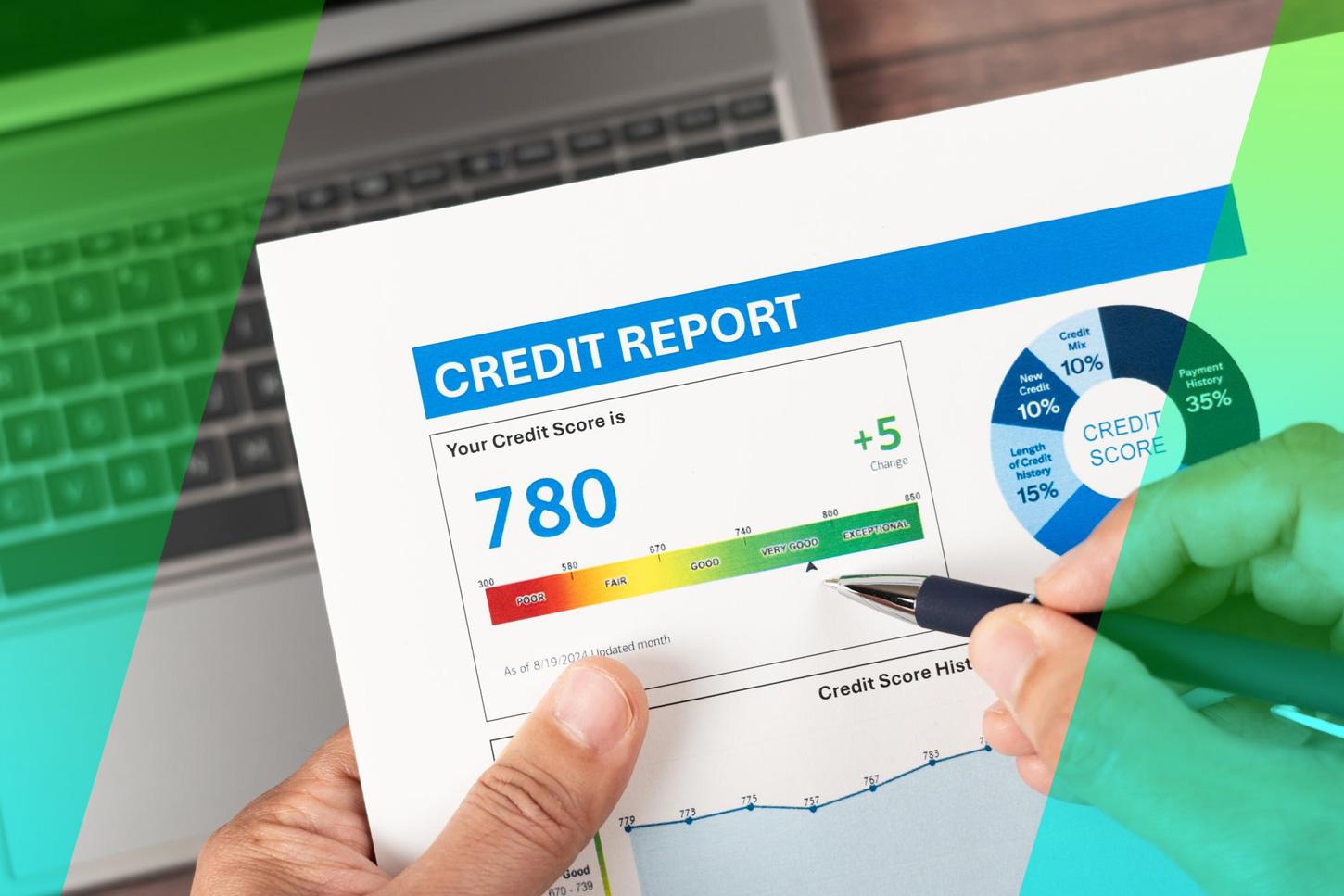The good news is that it’s not a secret. Scoring models, like the FICO score used by 90% of top lenders, are based on five specific factors—five “pillars” that build your financial reputation. Understanding these pillars is the key to demystifying your score. This in-depth guide will break down each pillar, explain its importance, and give you the clear, actionable knowledge you need to build a strong credit score for life.
Key Takeaways
- The 5 Pillars: Your credit score is built on Payment History (35%), Amounts Owed (30%), Length of Credit History (15%), Credit Mix (10%), and New Credit (10%).
- The “Big Two”: Payment History and Amounts Owed make up 65% of your entire score. Focusing on just these two factors will have the biggest impact.
- Payment History (35%) is King: One single late payment can damage your score more than any other single mistake.
- Amounts Owed (30%) is Queen: This is your “Credit Utilization Ratio.” Keeping your balances low (below 30%) on credit cards is the fastest way to *improve* your score.
- Credit is a Marathon, Not a Sprint: The other three pillars—length of history, mix, and new credit—are all about demonstrating consistency and responsible behavior over time.
What Is a Credit Score and Why Does It Matter?
Before we dive into the pillars, let’s establish a clear baseline. A credit score is a 3-digit number, typically between 300 and 850, that represents your creditworthiness. It’s a “grade” for lenders that quickly summarizes one thing: **”How likely is this person to pay back the money they borrow?”** A higher score means you are seen as a lower risk, which unlocks massive benefits:
- Access to Loans: A higher score makes it easier to be approved for a mortgage, car loan, or personal loan.
- Lower Interest Rates: This is the big one. A good score can save you tens or even hundreds of thousands of dollars over your lifetime in the form of lower interest payments.
- Other Perks: It can also mean lower insurance premiums, the ability to rent an apartment without a large deposit, and access to premium rewards credit cards.
The 5 Pillars That Make Up Your FICO Score
Here is the official breakdown, directly from FICO, of what matters most in your credit report. We will explore each one in detail.
1: Payment History (35% of Your Score)
What it is: This is a simple record of whether you have paid your bills on time. It’s the most important factor, making up over a third of your score. This pillar tracks your payments on credit cards, installment loans (like car loans or mortgages), and public records (like a bankruptcy or collection account).
Why it matters: This is the #1 predictor of future behavior. Lenders want to see a long, consistent history of you keeping your promises. A single 30-day late payment can stay on your report for seven years and cause a significant score drop, especially if your score was high to begin with. A 60- or 90-day late payment is even more devastating.
How to win at this pillar:
1. **Pay 100% of your bills on time.** This is the golden rule of credit.
2. **Set up autopay.** The easiest way to ensure you’re never late is to set up automatic payments for at least the minimum amount due on all your accounts.
3. **Address collections.** If you have an old account in collections, create a plan to resolve it, as it is a major negative mark in this category.
2: Amounts Owed / Credit Utilization (30% of Your Score)
What it is: This pillar looks at how much debt you are carrying. The most important part of this is your **Credit Utilization Ratio** on your revolving accounts (like credit cards). This ratio is your total credit card balances divided by your total credit card limits.
Example: If you have one credit card with a $10,000 limit and a $3,000 balance, your utilization is 30% ($3,000 / $10,000).
Why it matters: High utilization (e.g., maxed-out credit cards) is a major red flag for lenders. It signals that you may be over-extended, relying on credit to live, and are at a higher risk of not being able to pay back new debt. While 30% is considered “good,” the best scores are often held by people with utilization under 10%.
DEBUNKING A MAJOR MYTH: You do NOT need to carry a balance and pay interest to build credit. This is 100% false. Paying your statement balance in full every month is the *best possible habit*. This results in a $0 balance being reported, shows lenders you are in complete control, and costs you $0 in interest.
3: Length of Credit History (15% of Your Score)
What it is: This pillar considers the average age of all your credit accounts, as well as the age of your oldest account. A longer history provides more data for a lender to analyze, which builds trust.
Why it matters: Time is on your side. A 20-year-old with one new credit card is a bigger unknown than a 40-year-old who has managed multiple accounts responsibly for two decades. This is why it’s crucial to get started with credit responsibly as early as you can.
How to win at this pillar:
1. **Start as soon as you are ready.** Get a starter credit card (even a secured card) and start building that history.
2. **DO NOT close old, no-fee cards.** This is a common and costly mistake. That first no-annual-fee credit card you got in college may be the anchor of your entire credit age. If you close it, your average credit age can drop, hurting your score. It’s better to keep it open, use it once every six months for a small purchase (like a coffee), and pay it off immediately to keep it active.
4: Credit Mix (10% of Your Score)
What it is: This is a smaller factor that looks at the *variety* of credit products you use. Lenders like to see that you can responsibly manage different types of credit.
Why it matters: The two main types of credit are **Revolving Credit** (like credit cards, where you can borrow and repay as you go) and **Installment Loans** (like a mortgage or car loan, with a fixed payment for a fixed term). Having a healthy mix of both shows you are a well-rounded and experienced borrower.
Important Caveat: You should **NEVER** take out a loan (and pay interest) just to “improve your mix.” This factor is small and not worth the cost. It’s something that will naturally build over your lifetime as you buy a car or a home.
5: New Credit (10% of Your Score)
What it is: This pillar looks at how recently and how often you have applied for new credit. When you formally apply for a loan or credit card, it results in a “hard inquiry” on your report.
Why it matters: One hard inquiry here and there is no big deal and will only ding your score by a few points. However, applying for 5 different credit cards in one month is a massive red flag. It signals desperation to lenders and suggests you may be in financial trouble or about to take on a large amount of new debt that you can’t handle.
How to win at this pillar:
1. **Be strategic.** Don’t apply for credit you don’t need.
2. **Space out applications.** Wait at least 6 months between applying for new cards or loans if possible.
3. **Note:** Checking your *own* credit score on a free app is a “soft inquiry” and has **ZERO impact** on your score. You can and should check your score as often as you like.
Your Score is a Habit, Not a Mystery
As you can see, your credit score isn’t a magical, secret number. It’s a reflection of your financial habits, weighted by importance. The path to an excellent credit score is clear and open to anyone.
If you just focus on the “Big Two”—paying 100% of your bills on time and keeping your credit card balances low—you are virtually guaranteed to build a strong credit score over time. The rest is just polish. You have the blueprint; now you can take control.
Disclaimer (Please Read): The content in this article is for informational purposes only and does not constitute financial, tax, or legal advice. Individual results will vary, and past performance does not guarantee future results. For specific questions and personalized guidance, consult a Swift Debt Relief professional or a qualified financial advisor.






